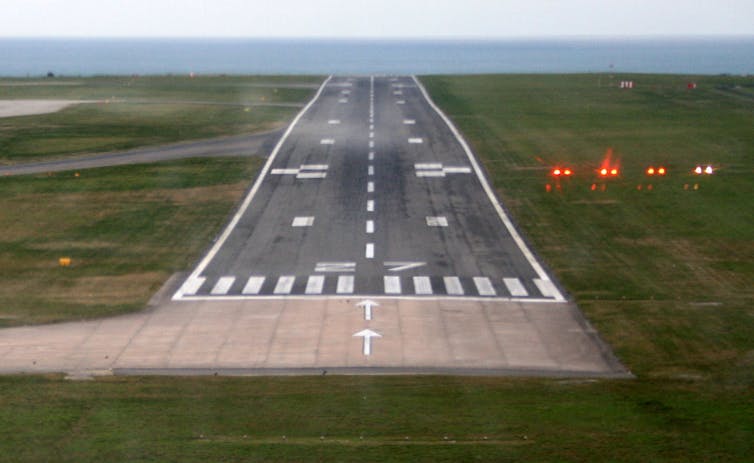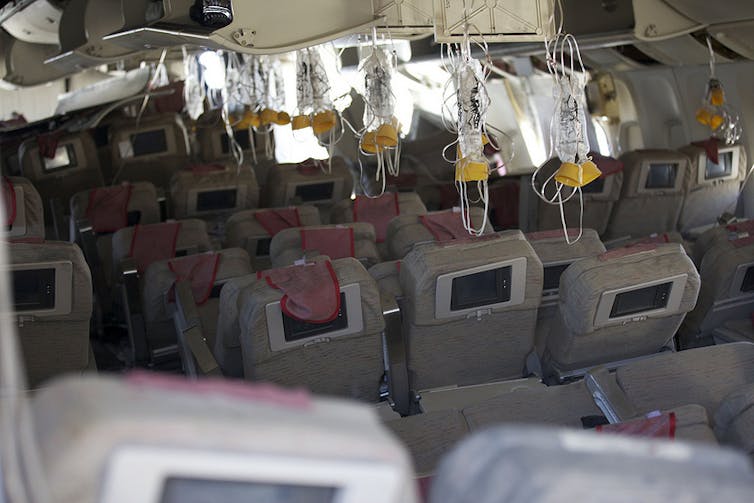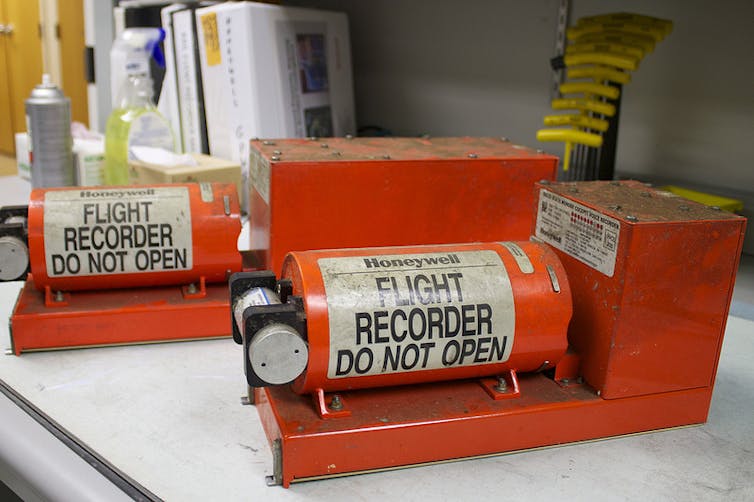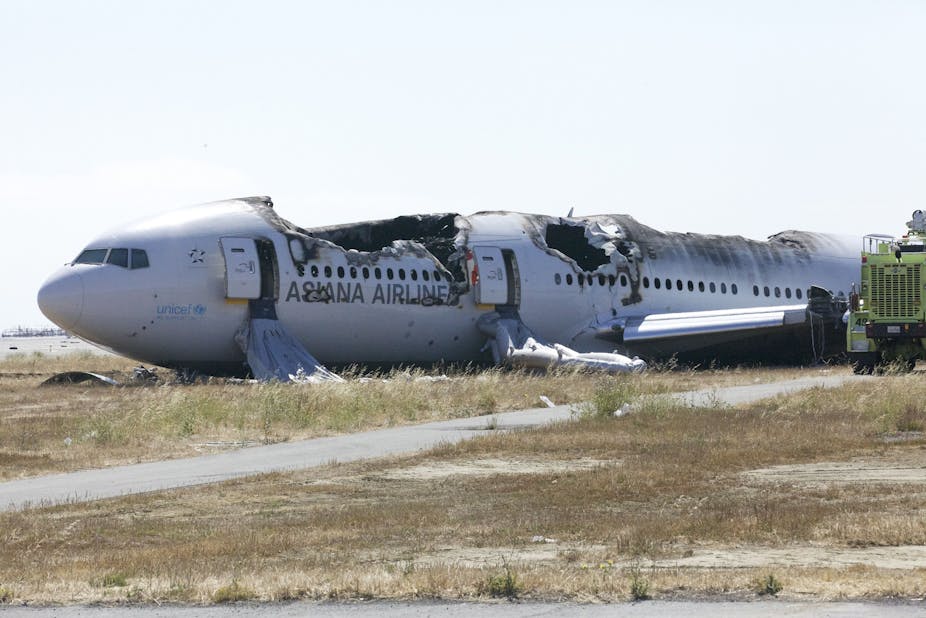It is still far too early in the investigation into the accident involving Asiana flight 214 at San Francisco airport to draw any conclusions about the events leading up to the accident. However, some may be wondering to what extent the information released so far by the US investigation agency, the NTSB, corresponds to a “typical” landing.
Descent
A modern airliner such as a Boeing 777 will start descending from its cruising altitude (for example, 37,000ft) and slowing from its cruising speed (for example, 470kt true airspeed) when it is around 100 miles from the airport.
The goal is to gradually reduce height and speed so that the aircraft arrives at the runway at a safe speed (typically around 135kt) for the landing. Air traffic control directs the aircraft towards the airport by issuing a series of instructions to change heading (direction of flight), height and speed until the aircraft can begin its approach to the runway.
Guided approach
The approach method depends on a number of factors including the weather, the aircraft type and the airport equipment available. Nearly all major airports are equipped with systems that provide pilots with direction and descent profile guidance to the runway. These systems can allow the aircraft to land safely and automatically when visibility is poor and the pilots cannot see the runway, but they are also commonly used even when the weather is good to provide additional guidance to pilots flying approaches manually.
The approach guidance, known as the Instrument Landing System (ILS, gives both lateral position relative to the runway and also indicates whether the aircraft is on, above or below the ideal glide slope - the angle at which the plane descends.
A typical approach would follow a three degree glide slope. The approach would then descend on that glide slope, gradually dissipating speed to arrive at the target approach speed which is based on, among other things, the aircraft type and configuration.
As the speed decreases, the pilots will change the aircraft configuration by deploying flaps and slats. These are aerodynamic devices on the front (slats) and the rear (flaps) of the wings that you see extending during landing. They are designed to generate more lift, which allows the aircraft to land at slower and safer speeds.
Visual approach
A visual approach may make use of the Precision Approach Path Indicator (PAPI) lights. These are 4 lights which show a combination of white and red to indicate whether the aircraft is on, above or below the ideal glide slope.
Normally during a visual approach, one pilot would be flying the aircraft while the other monitors the aircraft’s speed, height and systems to ensure the aircraft is properly set up for the landing. Visual approaches are flown manually, but it’s quite usual in modern airliners to keep the autothrust (or autothrottle) system engaged to help keep the aircraft at the correct speed.

The aim of an approach is to become stabilised, that is, closely following the ideal glide slope with speed properly controlled and the aircraft correctly configured. If at any point during the approach or landing either pilot considers that it is not safe to continue (such as poor positioning, an occupied runway or unstable approach), they will call for a go-around. The crew will then apply full power and climb away from the airport on a prescribed path to either set up another approach or divert to another airport.
Landing
With the aircraft stable and correctly positioned, the approach phase can transition to the landing. As the aircraft arrives over the runway threshold, automatic callouts tell the pilots the height above the runway. At around 20ft the pilot will close the throttles and start to flare (lift the nose of the aircraft) allowing the main landing gear to touch down, followed by touching down the nose gear.
The aircraft should touch down close to the aiming point (painted on the runway) with a low rate of descent. They will then apply brakes (or use automatic braking), and possibly reverse thrust, before turning off the runway onto a taxiway and taxiing to the terminal.
Asiana 214
The Asiana crash is the third hull loss of a Boeing 777 following a ground fire of an EgyptAir aircraft in Cairo and the accident to British Airways Flight 38 which crashed short of runway 27L at London Heathrow in 2008.
In the case of the Asiana accident, the NTSB has released a significant amount of initial information very early in the investigation. This is unusual and, while it can satisfy media interest, “drip-feeding” information this way can lead to facts losing their context and create misperceptions about what actually happened.

The NTSB has reported that at the time of the accident the visibility was very good (>10 miles) with low wind speeds (around 7kt). According to the US regulator, the FAA, the ILS glide slope system was unavailable at San Francisco airport between 1 June and 22 August, which would preclude a full instrument approach. This lack of availability was publicised as a Notice to Airmen (NOTAM), which is the usual way of notifying crews of this type of information.
The NTSB briefing stated that a visual approach clearance was issued for Asiana 214 and the crew were reported to be using the PAPI lights. The briefings suggest that the Asiana pilots disengaged the autopilot at around 1600ft and flew the approach manually, but at this stage it is not clear whether the autothrottle remained engaged throughout the rest of the approach or whether the pilots were controlling the speed manually.

Using information from the Flight Data Recorder and the Cockpit Voice Recorder the NTSB reported that the ideal approach speed was identified as 137kt and that the lowest speed reach during the approach was 103kt. They have also reported that the low speed was noticed by the pilots seven seconds before impact, that the “stick shaker” (a device giving auditory and tactile feedback) activated four seconds before impact and that a go-around was called a second and a half before impact.
Understanding what happened in the run-up to an accident is only the start of the investigation. It’s more important to understand why it happened and, the ultimate aim of accident investigation, to stop it happening again.

